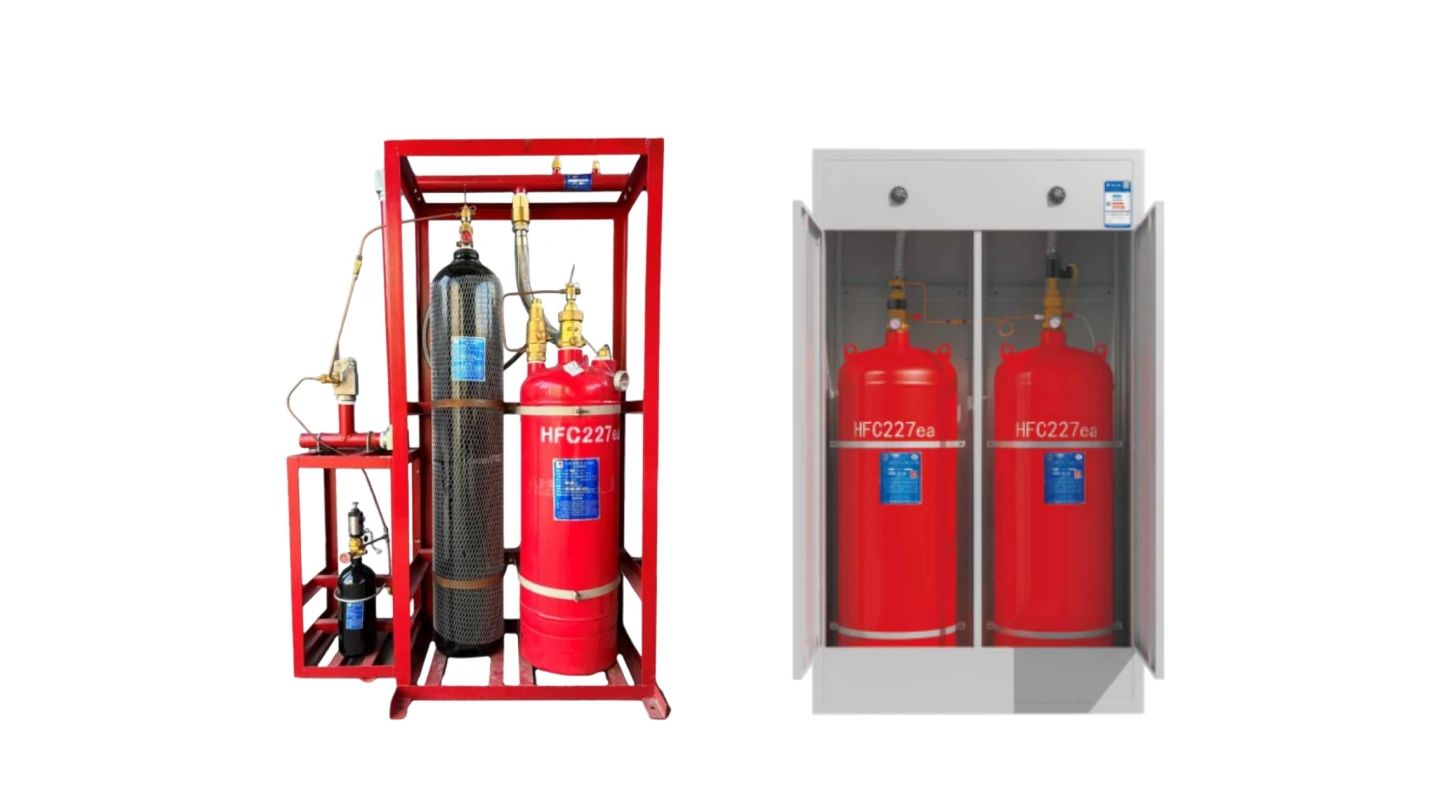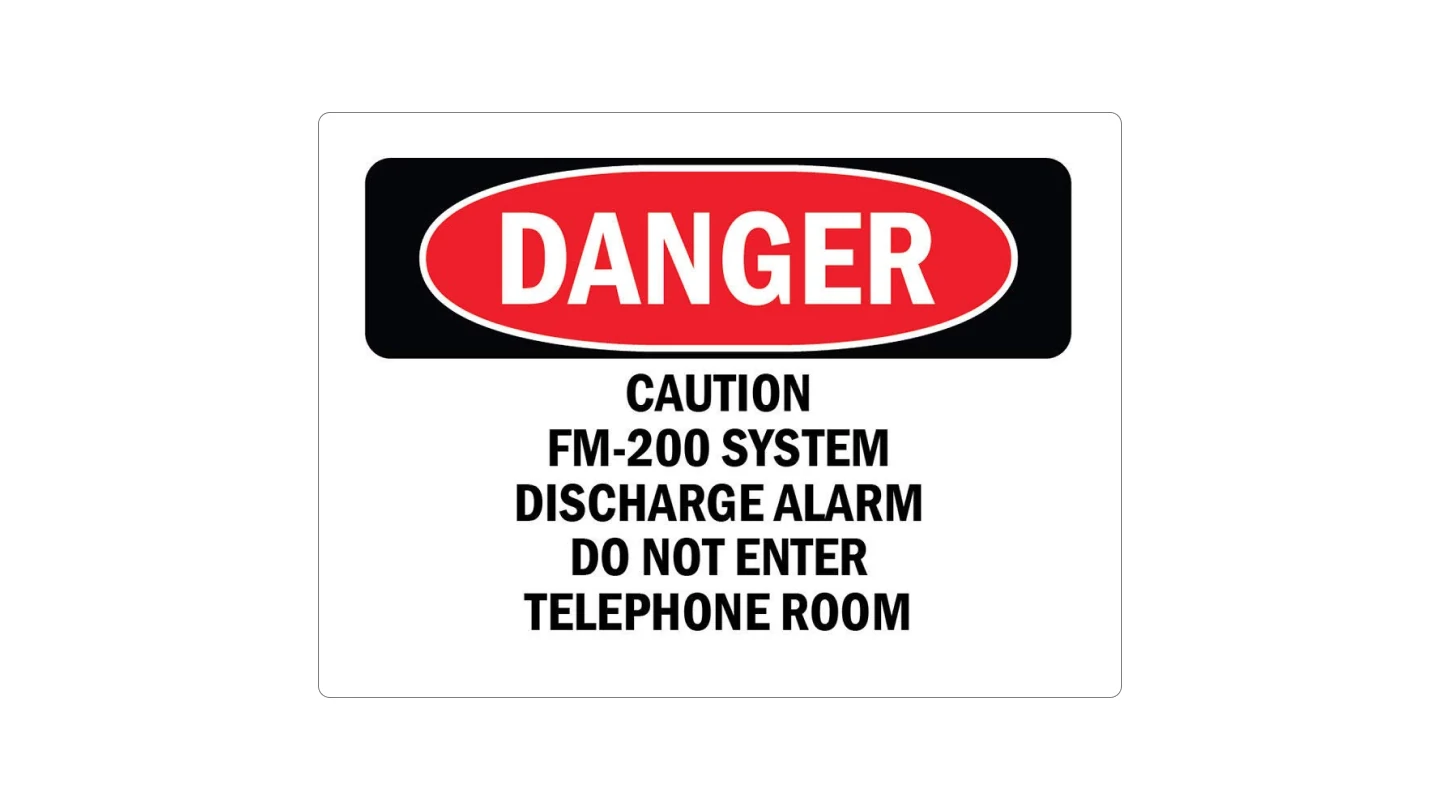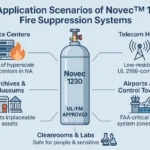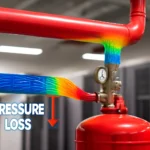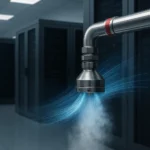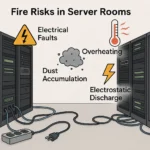In high-value, occupied spaces—such as data centers, power control rooms, and medical facilities—the fire protection system must not cause more harm than the fire itself. Traditional agents may suppress flames but often damage sensitive equipment or require extensive cleanup. That’s why many facilities turn to FM-200 clean agent fire suppression systems—a solution that extinguishes a fire rapidly, is electrically non-conductive, and leaves no residue.
Consider a 2008 electrical fire at a U.S. data center. The sprinkler activation caused over $10 million in water-related damages. In contrast, FM-200 systems have repeatedly stopped ordinary combustible, electrical, and flammable liquid fires before they cause significant damage, all while preserving uptime and asset integrity.
When clean, efficient, and people-safe fire protection is non-negotiable, FM-200 clean agent solutions offer an extra margin of safety for people and infrastructure alike.
What is FM200?
FM-200, chemically known as HFC-227ea, is a colorless, odorless, and electrically non-conductive clean agent fire suppressant widely used in modern fire extinguishing systems. Composed of carbon, fluorine, and hydrogen, it extinguishes fires by absorbing heat and interrupting the combustion reaction—without displacing oxygen—making it safe for use in occupied spaces.
FM-200 is typically discharged through clean agent fire suppression systems designed to reach extinguishing levels with a minimum concentration of 6.4% by volume in under 10 seconds. It operates at a typical storage pressure of 360 psi (25 bar) and is stored as a liquefied gas, minimizing storage space requirements. It is effective against Class A, B, and C fires, and leaves no residue, helping to avoid equipment corrosion or extended downtime due to cleanup.
In addition to fixed applications, FM-200 fire suppression systems are also available in modular and portable units for localized protection of high-value assets such as electrical cabinets, server enclosures, and medical devices. These configurations deliver the same clean, fast, and equipment-safe performance, particularly where traditional agents may be unsuitable.
Backed by international approvals and compliance with United States Environmental Protection Agency (EPA) listings, FM-200 continues to serve critical industries such as data centers, telecom, healthcare, and defense. Its speed, system design flexibility, and minimal environmental impact—including zero ozone depletion—make it a reliable and responsible choice for modern fire protection.
Why Choose FM-200?
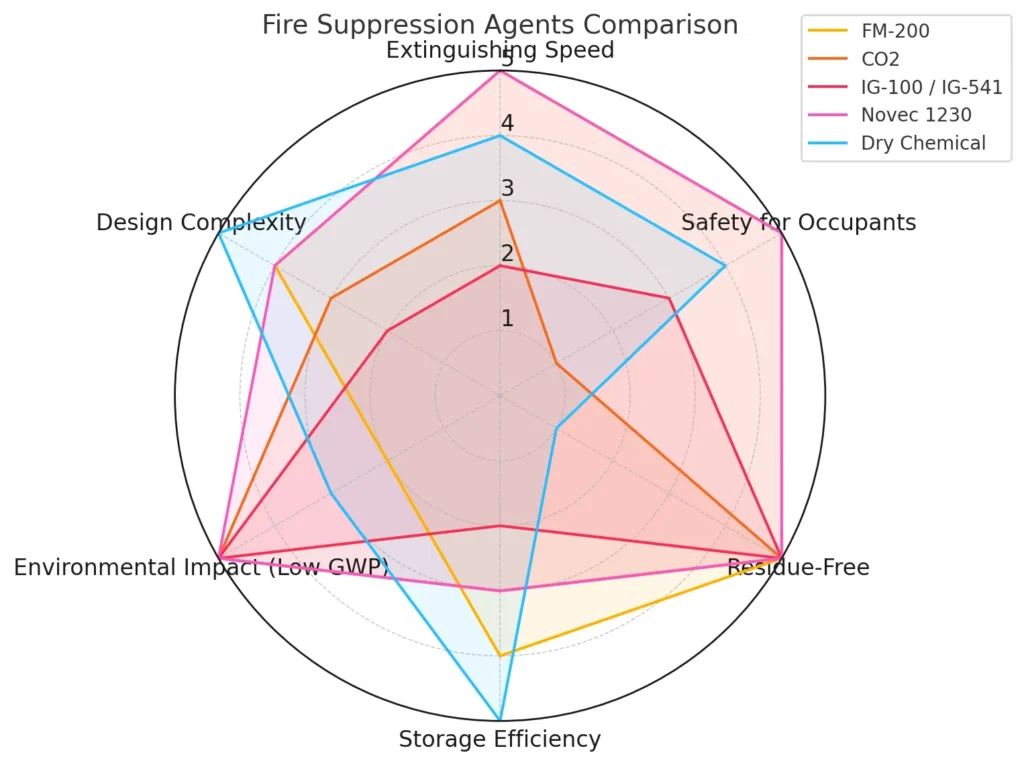
When selecting a fire suppression solution for high-value or sensitive environments, performance, personnel safety, and environmental impact are key decision factors. The FM-200 system, as part of modern clean agent fire suppression systems, offers a unique combination of rapid response, design efficiency, and clean discharge—making it a preferred option over alternatives such as CO₂, inert gases (IG-100/IG-541), Novec 1230, and dry chemical agents.
Below is a comparative overview of common suppression agents:
| Suppression Agent | Extinguishing Time | Safe for Occupants | Residue-Free | Typical Design Concentration | Ozone Depletion Potential (ODP) | Global Warming Potential (GWP) |
| FM-200 (HFC-227ea) | Less than 10 seconds | Yes | Yes | ~6.4% (Class A fires) | 0 | ~3,220 |
| CO₂ | 30–60 seconds | No (asphyxiation hazard) | Yes | ~34–67% | 0 | 1 |
| IG-100 / IG-541 | 60+ seconds | Limited* | Yes | ~40–50% | 0 | 0 |
| Novec 1230 | Less than 10 seconds | Yes | Yes | ~5.6% | 0 | Less than 1 |
| Dry Chemical | Less than 10 seconds | Yes | No | Direct application | N/A | N/A |
The FM-200 system is capable of stopping ordinary combustible, electrical, and flammable liquid fires before they cause significant damage, reaching effective concentrations in under 10 seconds. It extinguishes a fire cleanly and quickly, without producing residue or requiring cleanup—making it ideal for mission-critical electronics.
While Novec 1230 offers a lower global warming potential, FM-200 provides better storage efficiency and more compact system design, especially in retrofit or space-constrained settings. In contrast, CO₂ systems pose serious life safety risks in occupied spaces, whereas FM-200 is electrically non-conductive and offers an extra margin of safety for people during activation.
Inert gas systems, though environmentally neutral, require significantly more storage volume and infrastructure. Dry chemical agents, while effective, are unsuitable for clean environments due to their corrosive and dusty residue.
Registered under the States Environmental Protection Agency’s SNAP program, FM-200 remains one of the most trusted, widely deployed solutions in industries where safety, uptime, and asset protection must go hand-in-hand.
Environmental Policy and Regulatory
FM-200 (HFC-227ea) is valued for its rapid, residue-free fire suppression performance in critical environments. However, as a hydrofluorocarbon (HFC) with a global warming potential of approximately 3,220, it is now subject to increasing regulatory scrutiny in the United States.
Under the Significant New Alternatives Policy (SNAP) program, FM-200 remains an approved agent for total flooding applications. However, the American Innovation and Manufacturing (AIM) Act, signed into law in 2020, mandates a phasedown of high-GWP HFCs, including HFC-227ea. The States Environmental Protection Agency has begun implementing quotas to limit their production and import, creating long-term uncertainty around availability and cost.
While FM-200 is not currently banned, these policies signal a clear regulatory shift. For new systems or replacements, many users are considering alternatives that align with future compliance goals:
- Novec 1230 (FK-5-1-12): A SNAP-listed agent with ultra-low GWP (<1) and no ozone depletion potential; widely adopted in occupied, space-sensitive environments.
- Inert Gases (IG-100, IG-541): Zero GWP and no chemical reactivity, though they require greater storage volume and higher discharge pressure.
The FM-200 system remains a compliant and effective solution today. However, businesses focused on ESG targets, system lifecycle planning, or long-term operational resilience are increasingly transitioning toward environmentally sustainable clean agent fire suppression systems.
FM-200 is a fast-acting, residue-free clean agent that provides reliable fire suppression in high-value, mission-critical environments.
Flarenix offers a full range of gas-based fire suppression systems—including FM-200, Novec 1230, and inert gas solutions—customized to your facility’s needs. Connect with a Flarenix expert today to design a compliant, effective system that protects your people, operations, and assets without compromise.

